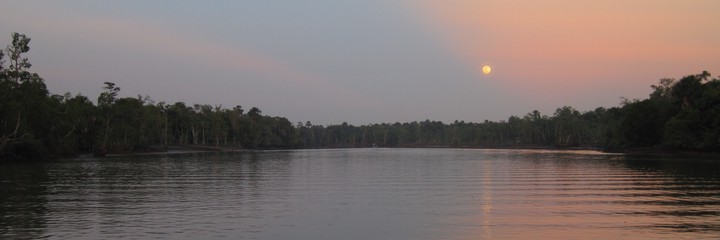Composition and flow of dissolved and particulate carbon and nitrogen in the lower Tocantins River

Abstract
The Tocantins River contributes ∼5% of the total flux of water to the Amazon River plume in the Atlantic Ocean. Here, we evaluate monthly variability in the composition and abundance of carbon,nitrogen, and suspended sediment in the lower reaches of the Tocantins River from 2014 to 2016. Dissolved organic carbon concentrations generally increased during periods of high discharge and are ∼1.5 times lower than average concentrations at the mouth of the Amazon River. Dissolved inorganic carbon similarly increased during periods of high discharge. Total dissolved nitrogen and individual nitrogen species followed a similar temporal pattern, increasing during high water. NO3 predominated the dissolved inorganic nitrogen pool, followed by NH4, and NO2, characteristic of environments with a relatively low anthropogenic impact. Dissolved fractions represented 92% of the total carbon exported and 78% of the total nitrogen exported. The suspended particulate sediment flux was 2.72 × 106 t yr−1, with fine suspended sediment dominating (71.3%). Concentrations of carbon relative to nitrogen indicate a primarily terrigenous source of organic matter and CO2 derived from in situ respiration of this material during the rainy season and a primarily algal/bacterial source of organic matter during the dry season. Considering past estimates of dissolved carbon and nitrogen fluxes from the Amazon River to the Atlantic Ocean, the Tocantins River contributes 3% and 3.7% to total fluxes to the Amazon River plume region, respectively. While this contribution is relatively small, it may be influenced by future changes to the basins land use and hydrology.